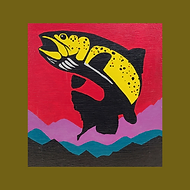Winter Fly Fishing: The Best Fly Selection and Gear for Cold-Weather Success
Winter fly fishing can be a rewarding challenge for anglers willing to brave the cold. While the fish may be sluggish, they are still feeding, and with the right flies and gear, you can enjoy productive days on the water. Here’s what you need to know about fly selection and essential winter gear.
Winter Fly Selection
During winter, trout and other fish slow down, so matching their feeding habits is crucial. Here are some of the best flies for cold-weather fly fishing:
1. Midges
Midges make up the majority of a trout’s diet in winter. Use small patterns (#18-#24) in colors like black, red, and olive. Popular choices include Zebra Midges, WD-40s, and Griffith’s Gnats.
2. Nymphs
Since fish often stay near the bottom in winter, nymphing is highly effective. Use patterns like Pheasant Tail Nymphs, Hare’s Ear Nymphs, and Prince Nymphs in sizes #14-#20.
3. Streamers
Although trout aren’t as aggressive in winter, they still take the occasional streamer. Slowly retrieving Woolly Buggers, Sculpzillas, or Muddler Minnows can entice big fish.
4. Egg Patterns
During winter, trout often feed on eggs left over from late-spawning fish. Use Glo Bugs or Otter’s Soft Eggs to mimic this easy meal.
Essential Winter Fly Fishing Gear
Staying warm and safe is just as important as having the right flies. Here’s the gear you’ll need:
1. Layered Clothing
Dressing in layers helps regulate your body temperature. Start with a moisture-wicking base layer, add an insulating mid-layer (such as fleece), and finish with a waterproof, windproof outer shell.
2. Waders and Boots
Cold water requires insulated waders. Neoprene or breathable waders with a thick layering system work well. Felt or rubber-soled boots with studs provide traction on icy rocks.
3. Gloves and Hand Warmers
Fingerless gloves with a fold-over mitten flap are ideal, allowing dexterity while keeping hands warm. Chemical hand warmers can also help maintain warmth.
4. Polarized Sunglasses
Glare from snow and ice can strain your eyes. Polarized sunglasses help reduce glare and allow you to spot fish more easily.
5. A Thermos of Hot Drink
Bringing along a thermos of coffee, tea, or hot chocolate can keep you warm and comfortable during long hours on the water.
Final Tips for Winter Fly Fishing
- Fish during the warmest part of the day (typically late morning to early afternoon).
- Focus on slow-moving, deeper pools where fish conserve energy.
- Use a slow presentation—trout won’t chase flies aggressively in cold water.
- Keep your gear dry and be mindful of icy conditions to prevent slips and falls.
Winter fly fishing requires patience and preparation, but it can lead to incredible experiences on the water. With the right flies and gear, you’ll be well-equipped to make the most of the cold season.


